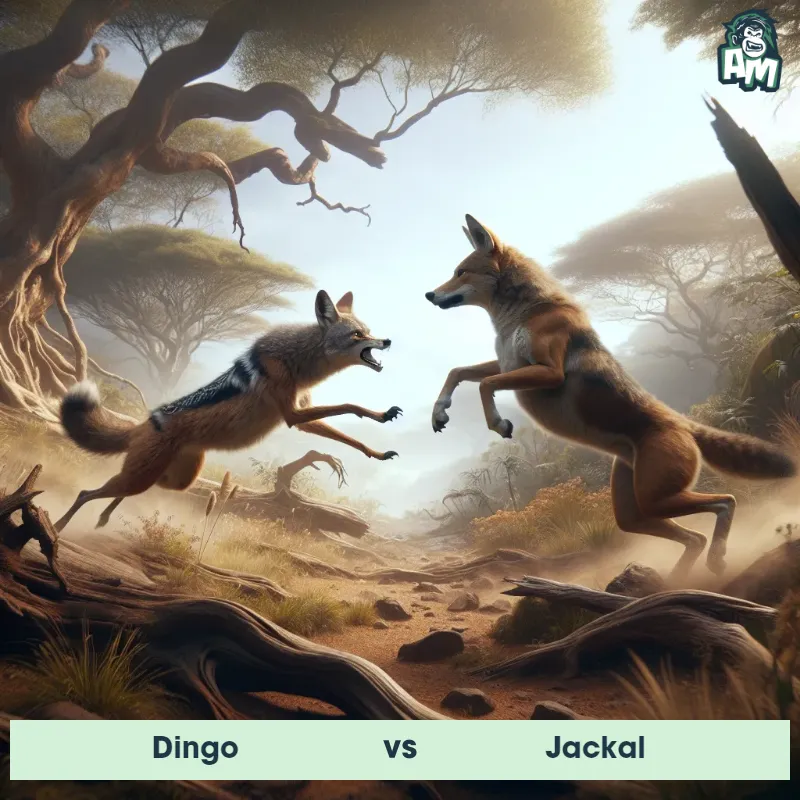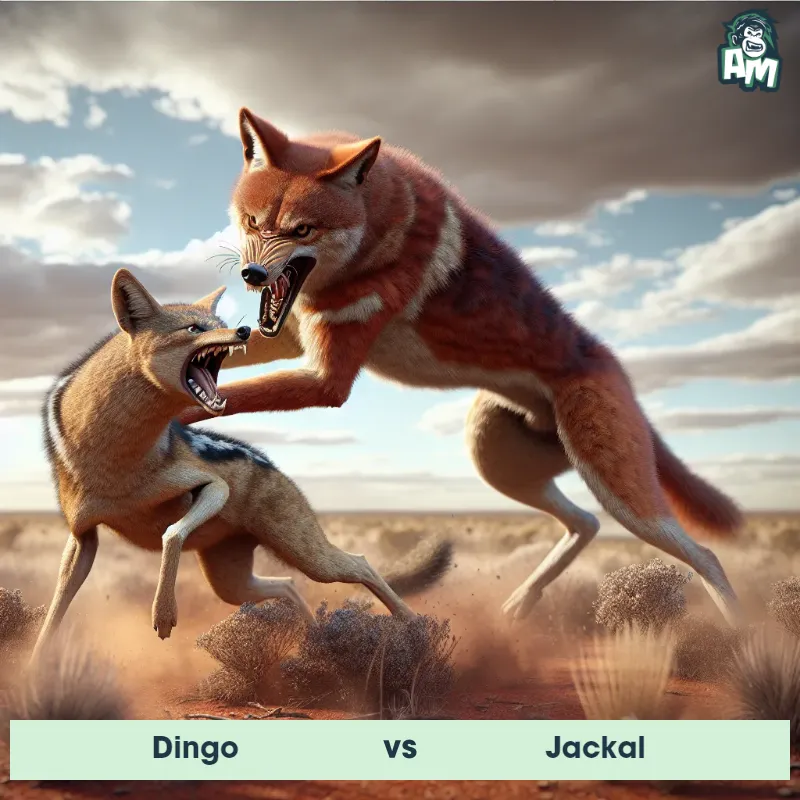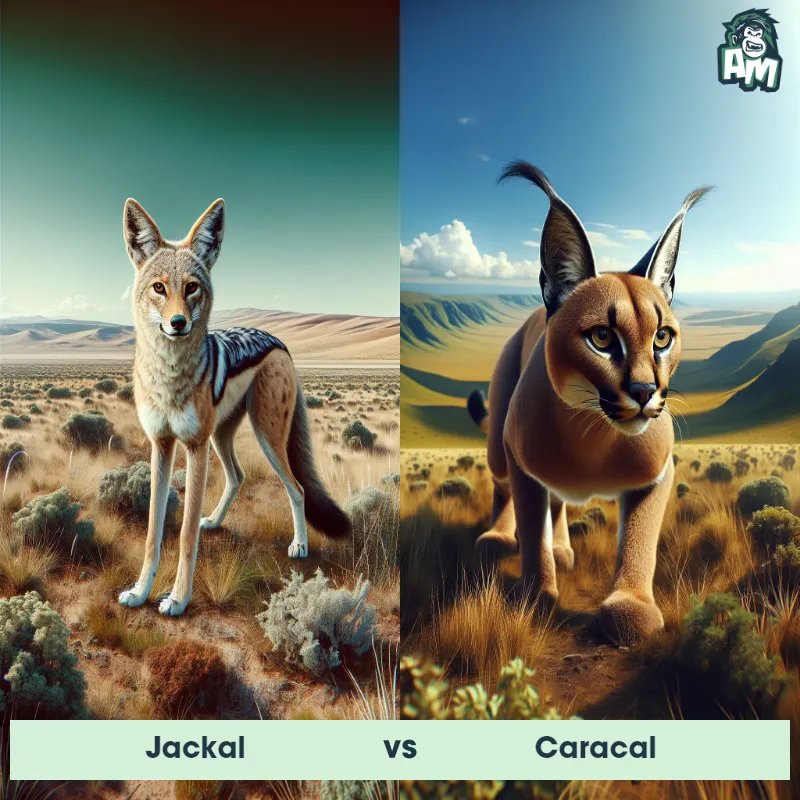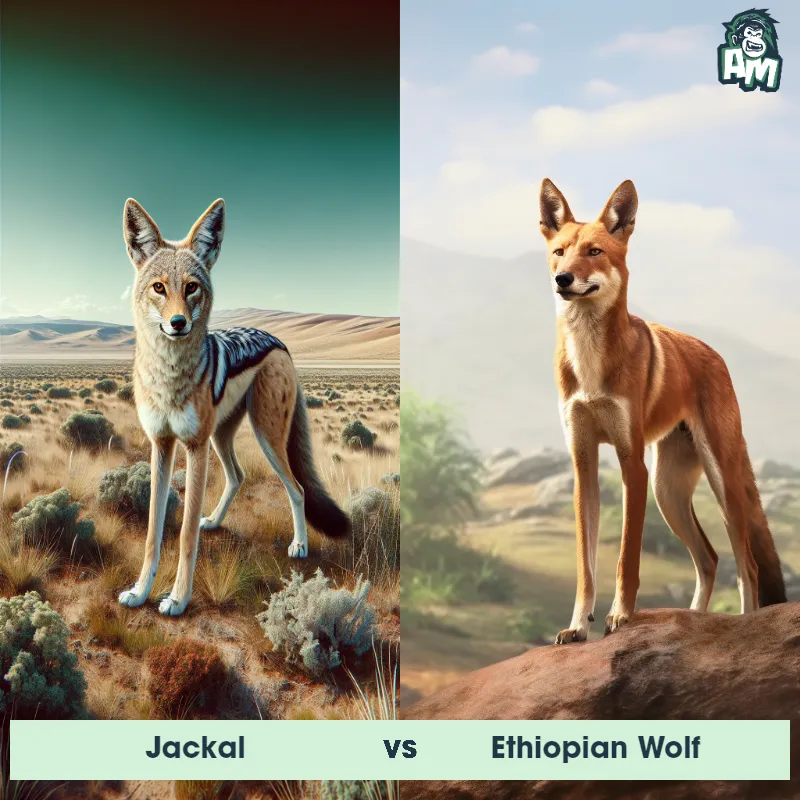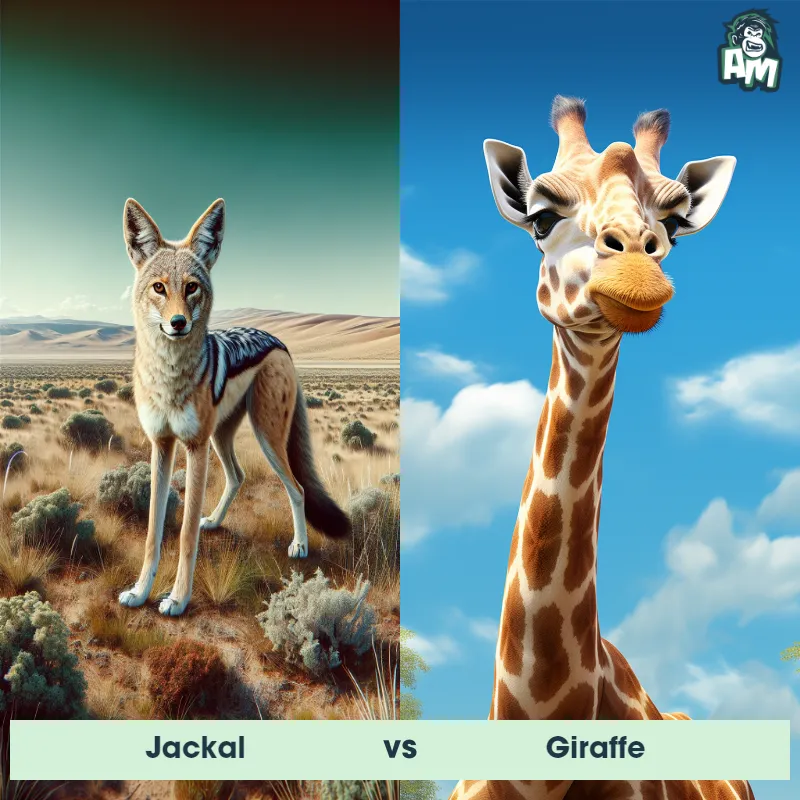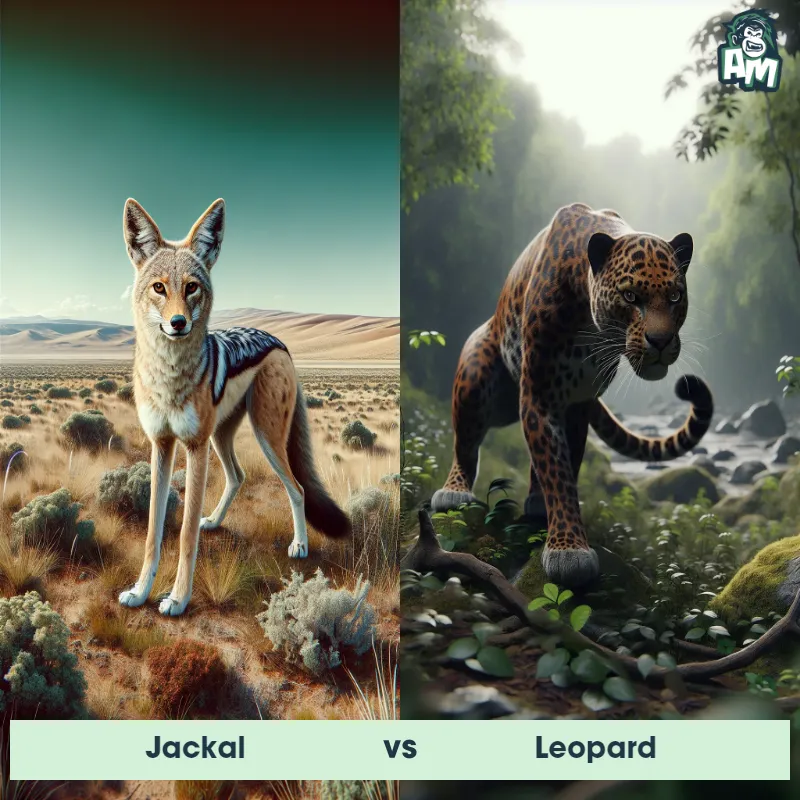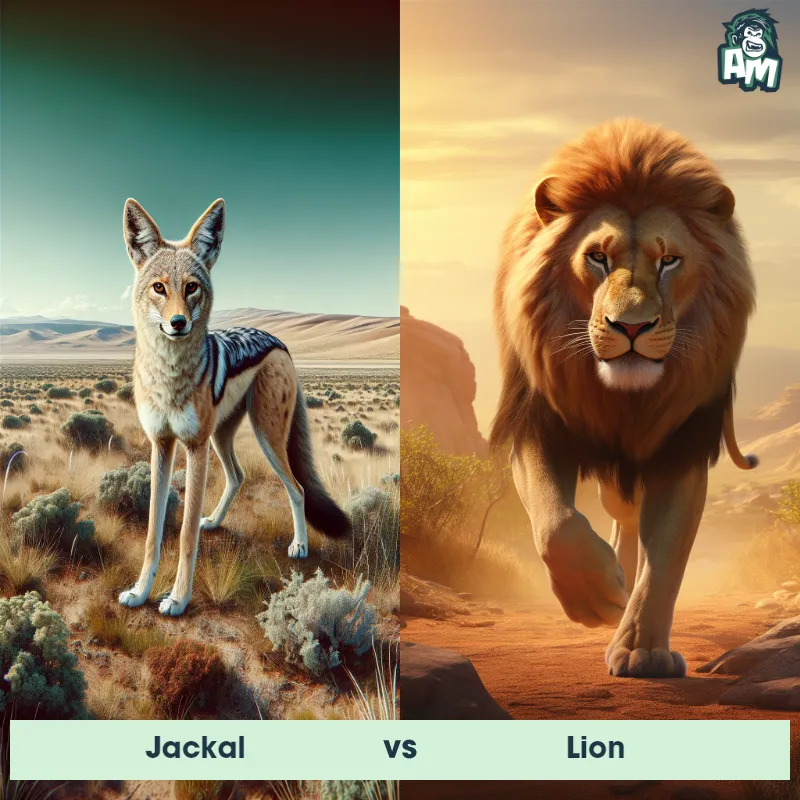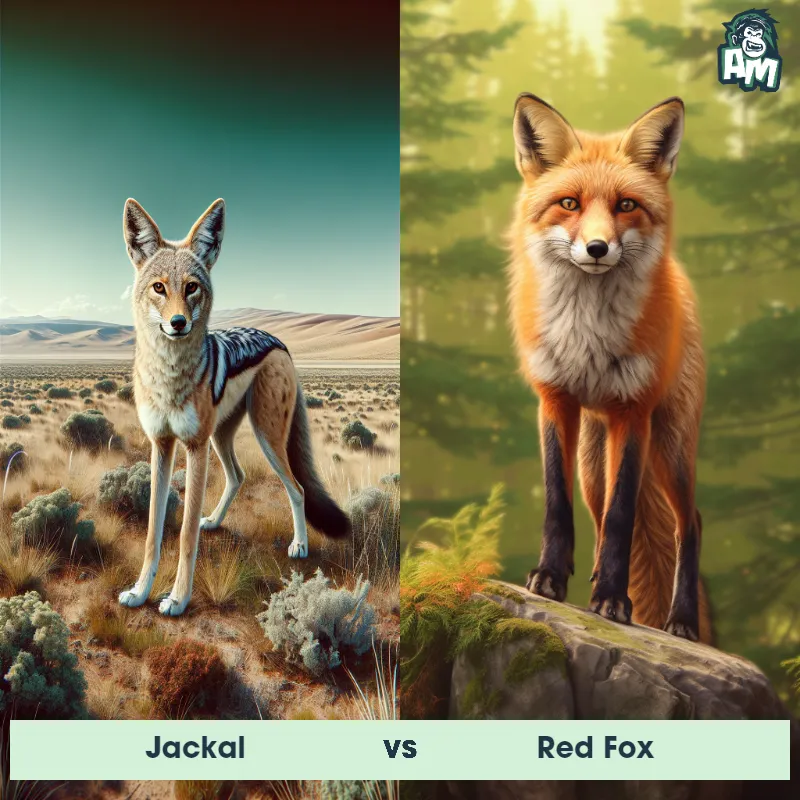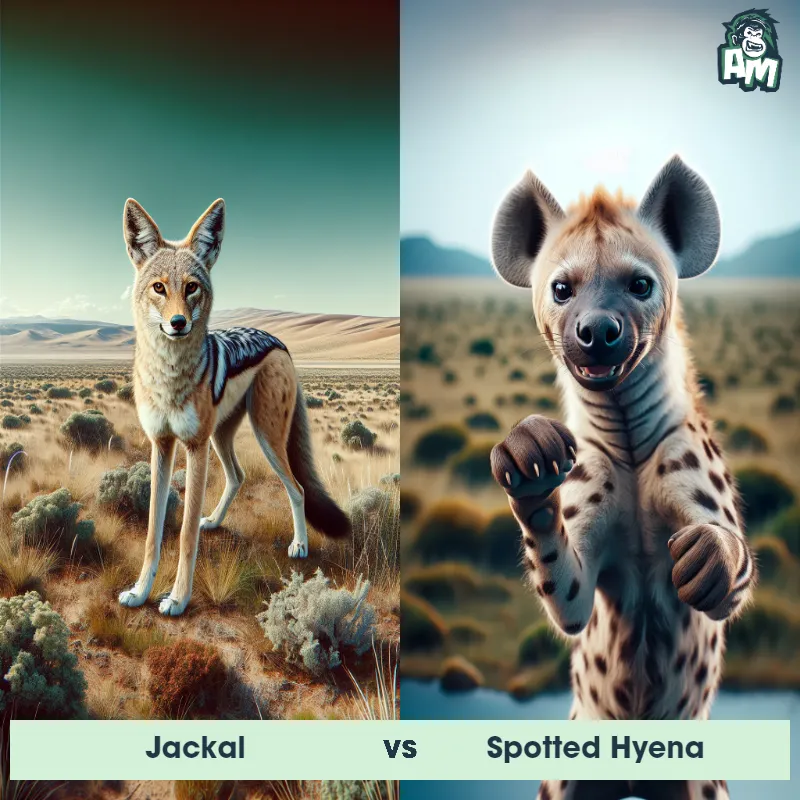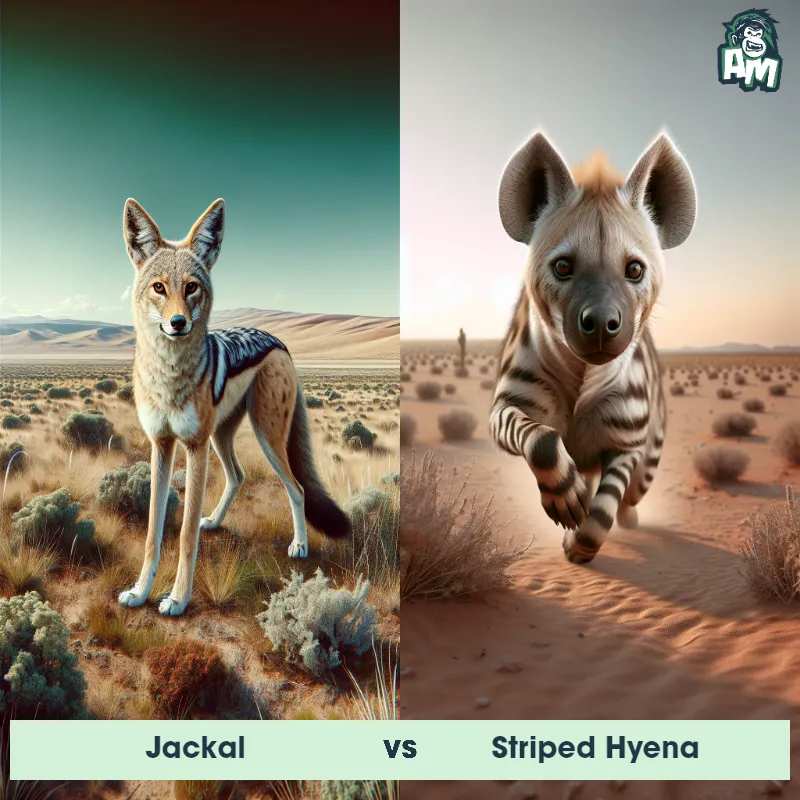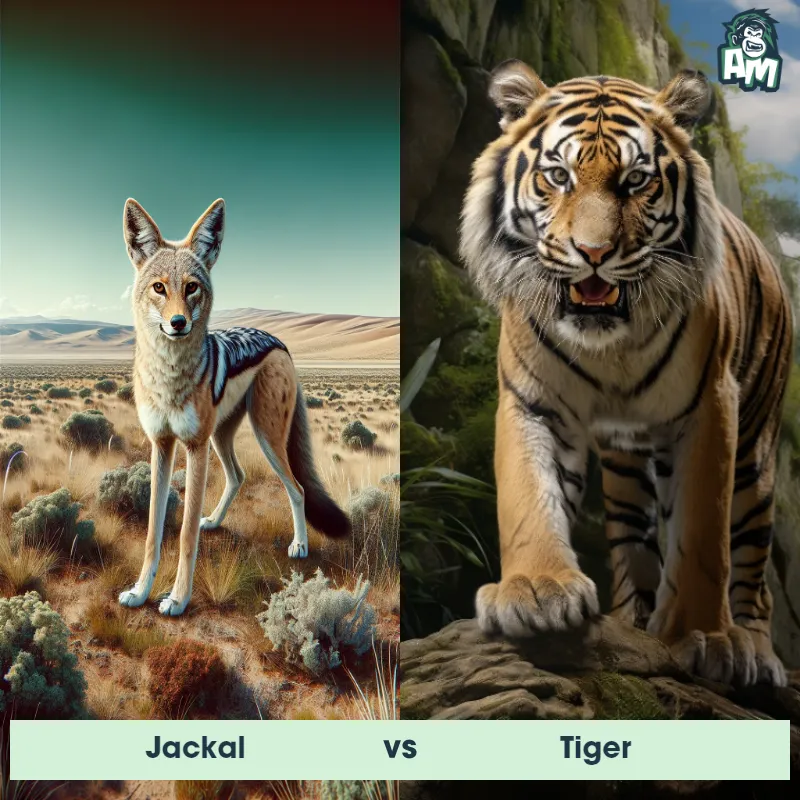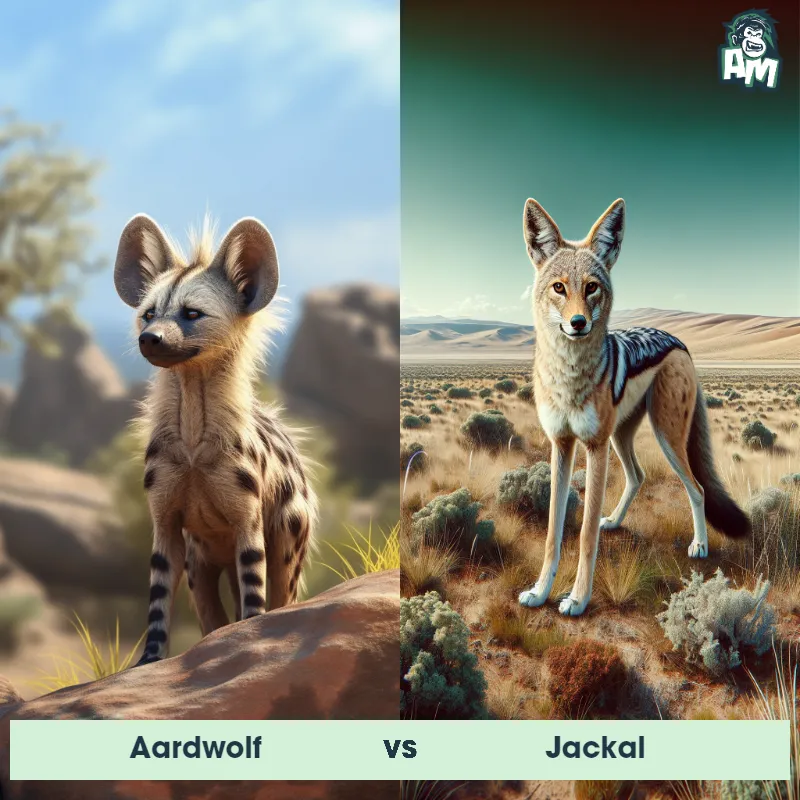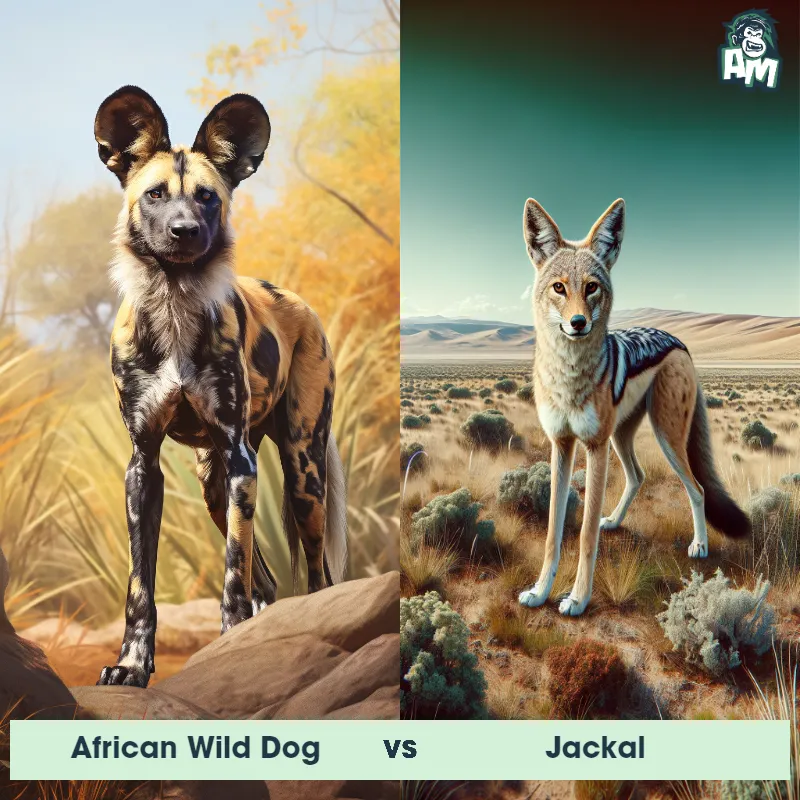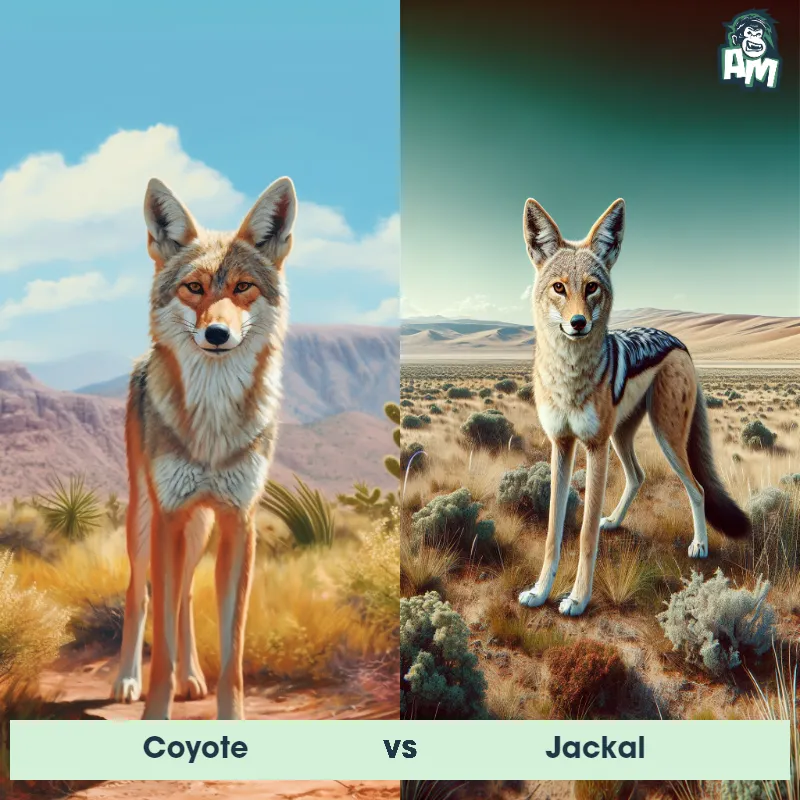The Jackal
The jackal, also known as Canis aureus, is a medium-sized carnivorous mammal that belongs to the Canidae family. With a slender body and long legs, they resemble a cross between a fox and a wolf. Jackals have a distinct reddish-brown or golden-colored fur with lighter tones on their underbelly, throat, and face. Known for their adaptability, jackals are highly territorial animals that exhibit both solitary and social behaviors depending on the species. They are opportunistic hunters and scavengers, feeding on a variety of small mammals, birds, invertebrates, and fruits.
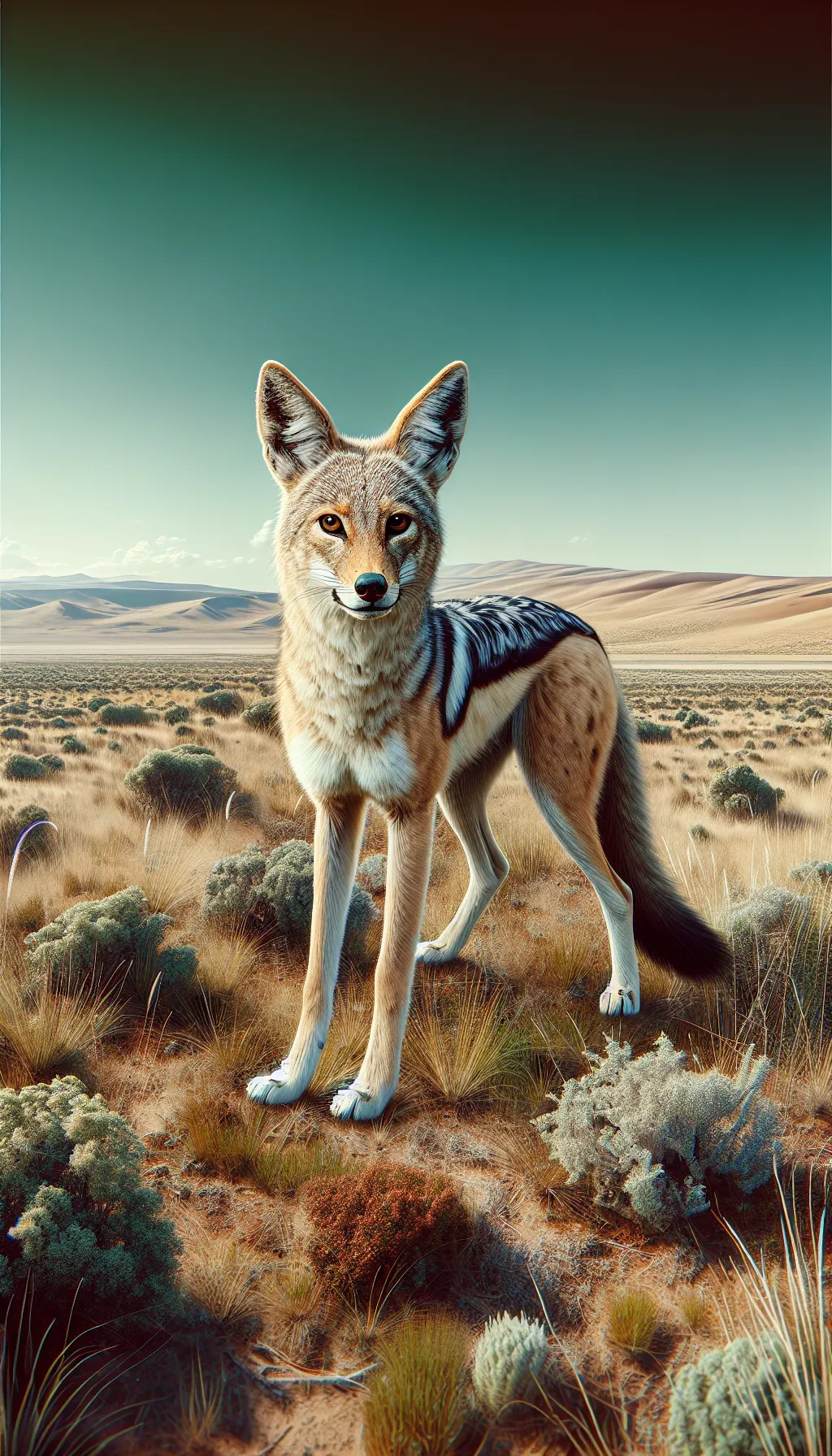
| Jackal | |
|---|---|
| Size | 16-20 inches (40-50 cm) at the shoulder |
| Weight | 15-35 pounds (7-16 kg) |
| Speed | Speed: 35 mph (56.3 km/hr) |
| Key Strength | Speed and agility |
| Biggest Weakness | Lack of physical strength |
| Scientific Name | Canis aureus |
| Family | Canidae |
| Habitat | Various habitats including deserts, grasslands, and forests |
| Geography | Africa, Asia, and southeastern Europe |
| Diet | Omnivorous, feeding on small mammals, birds, reptiles, insects, and carrion |
| Lifespan | 10 years - 15 years |

The Jackal
The jackal, also known as Canis aureus, is a medium-sized carnivorous mammal that belongs to the Canidae family. With a slender body and long legs, they resemble a cross between a fox and a wolf. Jackals have a distinct reddish-brown or golden-colored fur with lighter tones on their underbelly, throat, and face. Known for their adaptability, jackals are highly territorial animals that exhibit both solitary and social behaviors depending on the species. They are opportunistic hunters and scavengers, feeding on a variety of small mammals, birds, invertebrates, and fruits.
Fun Fact: One fascinating fact about the jackal is that they possess exceptional hearing, with their large, pointed ears allowing them to detect high-frequency sounds, including the faintest of prey movements or distant danger signals.
| Jackal | |
|---|---|
| Size | 16-20 inches (40-50 cm) at the shoulder |
| Weight | 15-35 pounds (7-16 kg) |
| Speed | Speed: 35 mph (56.3 km/hr) |
| Key Strength | Speed and agility |
| Biggest Weakness | Lack of physical strength |
| Scientific Name | Canis aureus |
| Family | Canidae |
| Habitat | Various habitats including deserts, grasslands, and forests |
| Geography | Africa, Asia, and southeastern Europe |
| Diet | Omnivorous, feeding on small mammals, birds, reptiles, insects, and carrion |
| Lifespan | 10 years - 15 years |
Match Highlights
Jackal Matchups
We use AI to simulate matchups between the Jackal and other animals. Our simulation considers size, strength, and natural predatory behaviors to determine the most likely outcome.

Can't find the Matchup you want?
Create Your Own MatchupJackal: Diet, Predators, Aggression, and Defensive Behaviors
What do Jackals eat?
Jackals are omnivorous animals that have a varied diet. They primarily feed on small mammals, birds, insects, fruit, and carrion. They are also known to scavenge for food and may feed on the remains of larger animals killed by predators.
Do Jackals have any predators?
Yes, Jackals have predators in the wild. Larger carnivores such as lions, leopards, and hyenas are known to prey on Jackals. Birds of prey such as eagles and large owls may also see Jackals as potential prey.
Are Jackals aggressive?
While Jackals are known to be territorial animals and may show aggression towards intruders in their territory, they are not typically aggressive towards humans. However, they may become hostile if they feel threatened or cornered.
Do Jackals fight?
Jackals are known to engage in aggressive encounters, especially when defending their territory or competing for resources. They may fight with each other or with other animals within their ecosystem to establish dominance or protect their young.
How do Jackals defend themselves?
Jackals have several strategies to defend themselves from threats. They may vocalize loudly to alert other members of their pack about potential danger, run away to safety using their speed and agility, or hide in dens or burrows to evade predators. In some cases, Jackals may also exhibit aggressive behavior to fend off threats.
What is the biggest weakness of Jackals in a fight?
One of the biggest weaknesses of Jackals in a fight is their relatively small size compared to larger predators. While they are agile and fast, their size can make them vulnerable to larger carnivores. Additionally, Jackals may rely on their pack members for protection and may struggle in fights when isolated or outnumbered.
Fun Fact: Unlike other members of the Canidae family, jackals have adapted to various habitats, occupying diverse ecosystems such as deserts, grasslands, savannas, and even urban areas, showcasing their remarkable ability to thrive in different environments.
Fun Fact: Jackals play an important role in the ecosystem as scavengers, contributing to the cleanup of carcasses left by larger predators. Their feeding habits help to prevent the spread of disease and maintain a balance within the animal kingdom, making them valuable and essential creatures in their respective ecosystems.



